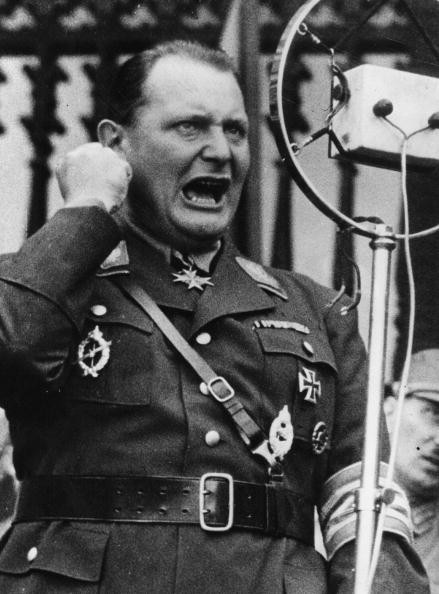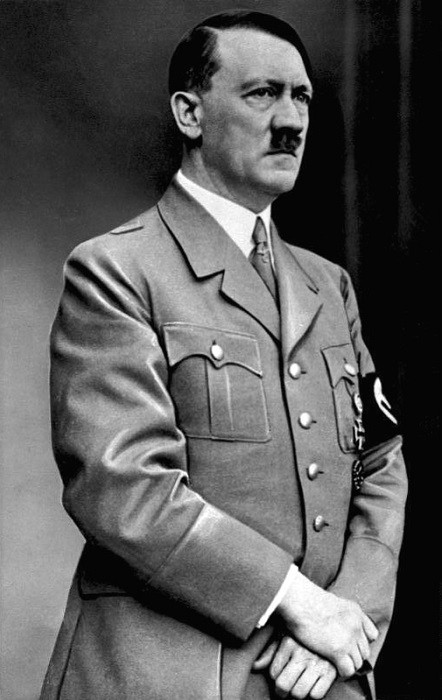Aurochs: How Hitler and Goering resurrected extinct species to make 'Nazi super cows'
A breed of cow that went extinct in the 1600s but was brought back to life by Hitler has made the headlines across the UK.

A breed of cow that went extinct in the 1600s but was brought back to life by Hitler has made the headlines across the UK.
Devonshire farmer Derek Gow had to slaughter most of his herd of Heck because of their "incredibly aggressive" behaviour. Some of the animals would try to kill anyone that approached and, as a result, have been turned into sausage meat.
Gow killed all but two bulls and four cows of the herd. "The ones we had to get rid of would just attack you any chance they could. They would try to kill anyone. I have worked with a range of different animals and they are far and away the most aggressive I have ever dealt with."
Origins
Aurochs, or Bos primigenius, died out in 1627 in Poland. They were a large breed of cattle, standing up to 1.8m in height, and was ancestor to modern domestic breeds. Aurochs had huge curved horns that characterised the breed – in some the horns could reach 80cm in length – and their legs were longer than modern cattle.

Historical accounts suggests the beasts were fast and very aggressive. They were not afraid of humans, and if they were hunted would attack back in response.
Evidence suggests the wild species began to be domesticated around 8,000 years ago.
By the 13<sup>th century, populations of wild aurochs had fallen dramatically with their range restricted from human expansion. They had disappeared from Britain by 2,000 BC, but remained in eastern Europe until the 17<sup>th century.
Rise of Nazi super cows
In the 1930s, Nazi second in command Hermann Goering asked geneticists Heinz and Lutz Heck to re-create the extinct species. A keen hunter, Goering instructed them to develop a genetically engineered species by back-breeding from auroch descendants.
The Heck brothers – working independently - crossed Spanish fighting bulls with Highland cattle, along with primitive breeds from Corsica and Hungary. The result – Nazi super cows. They were used for propaganda material during WWII – their bodies were huge and muscular, with massive horns – an illustration of the strength of the party.

Gow said: "There was a thinking that you could selectively breed animals – and indeed people – for 'Aryan' characteristics, which were rooted in runes, folklore and legend. What the Germans did with their breeding programme was create something truly primeval.
"The reason the Nazis were so supportive of the project is they wanted them to be fierce and aggressive. When the Germans were selecting them to create this animal they used Spanish fighting cattle to give them the shape and ferocity they wanted."
Problems and downfall
While resembling aurochs, Heck cattle never matched the size and stature of the extinct species. The brothers only ever managed to breed the cattle to the size of domestic cows. However, the physical resemblance was strong – as was the aggressive temperament.

Neither of the Heck brothers is believed to have survived WWII, with Lutz Heck's breed of cattle also dying out before 1945. As a result, all modern Heck breeds are descendants of Heinz Heck's experiments, with breeds including Hungarian Grey, Highland, Corsican and Murnau-Werdenfels.
Modern Hecks
Heck bulls today measure about 1.4m in height and weight up to 600kg. Their horns, while present, are not as uniform as aurochs, curving up or out more than the original species. However, the breed is very well suited to life in the wild, able to withstand cold temperatures and nutrient-poor food.
Currently there are about 2,000 Heck cattle in Europe, with the species found roaming free in nature reserves in Barvaria and the Netherlands.
Gow said that since he slaughtered the aggressive animals, the rest of the herd is no longer murderous.
"Since they have gone it is all peaceful again. Peace reigns supreme on the farm. Despite these problems, I have no regrets at all. It has been a good thing to do and the history of them is fascinating," he said, adding that the sausages tasted a bit like venison.
© Copyright IBTimes 2025. All rights reserved.





















